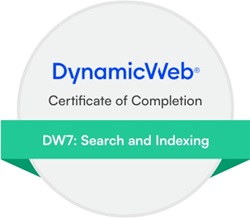Posted on 11/11/2025 10:23:14
Hi Adrian,
WHAT THE THREE GENERATED FIELDS ACTUALLY MEAN:
-
Product is fully translated (boolean)
True if the product has a language row for all languages in the index scope (typically the channel/shop languages you indexed). It does not look at field fill/quality - only existence of language records.
-
Product translated to (multi-value list of LanguageIDs)
The set of languages the product has a language row for. Example: ["LANG1","LANG3"]. Useful for “contains/does not contain” checks.
-
Product translation count (integer)
How many language rows exist for the product inside the index scope. Example: 2.
And scope matters: these are computed against whatever languages the index/channel includes. If your index only contains LANG1 and LANG2, then “fully translated” means “has both LANG1 and LANG2”.
HOW TO USE
-
Products not localized to LANG2 (pure translation presence, not documentation):
-
Products missing any language (i.e., not fully translated):
-
Products translated to fewer than N languages:
How to combine with Completeness (per language)
-
“Not documented in LANG2” (i.e., has a LANG2 row but missing required content):
Language = LANG2 AND Completeness < 100%
(Completeness is calculated on the fly for the current record set; the Language = LANG2 filter scopes it correctly.)
-
“Either not translated to LANG2 at all, or translated but under-documented”:
(Product translated to does not contain LANG2)
OR
(Language = LANG2 AND Completeness < 100%)
This last one is usually what people want operationally.
WHAT TO WATCH OUT FOR
-
If a product has no LANG2 row, then Language = LANG2 won’t match it, so you must include the “does not contain LANG2” branch to catch it.
-
Variants: decide whether you evaluate completeness on parent, variant, or both - indexes can be set to index either/both. Keep the logic consistent with that choice.
-
Fallbacks: those generated fields ignore any UI fallback behavior; they only reflect real language rows present in the DB/index.
I hope the above covers your question, otherwise let me know.
BR
Snedker











